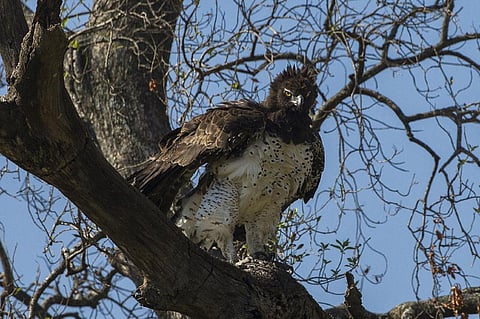

Around 30 per cent of the 557 raptor species around the world are threatened by extinction to some degree, according to a new study. Of them, 18 species are critically endangered, 25 are endangered, 57 are vulnerable and 66 are near-threatened.
The Philippine eagle, the hooded vulture and the Annobon scops-owl were among the 166 species facing some degree of threat, the study found. These birds of prey hunt larger vertebrates and feed on their flesh.
The new analysis by International Union for the Conservation of Nature (IUCN) and BirdLife International, a global initiative to protect birds and wildlife by non-profits, was published in the journal Proceedings of the National Academy of Sciences August 30, 2021.
The researchers identified the distribution range for each of the 557 species based on richness, endemism, geographic spread, conservation status and population trends. The results were derived from analysis of data from BirdLife International database of 2012 and IUCN database of 2015.
The threats to the birds are a result of habitat loss, pollution, human–wildlife conflicts and climate change, according to the paper.
Indonesia had the most raptor species, followed by Colombia, Ecuador and Peru.
The population of Philippine eagles, the largest variety of eagles in the world, decreased rapidly in the last decades due to extensive deforestation.
Some vulture populations have declined by over 95 per cent in Asian countries such as India because of the widespread use of diclofenac, a non-steroidal anti-inflammatory drug.
In Africa, particularly West Africa, vulture populations have decreased by an average of 95 per cent in rural areas over the last 30 years as the result of shooting and poisoning through feeding on carcasses of livestock treated with diclofenac, found the study.
The Annobon scops-owl, with an estimated population of fewer than 250 and restricted to Annobon Island off West Africa, was recently classified as ‘critically endangered’ because of rapid habitat loss and degradation.
Raptors prey on a wide range of vertebrates and thus, facilitate long-distance seed dispersal. This indirectly increases seed production and pest control.